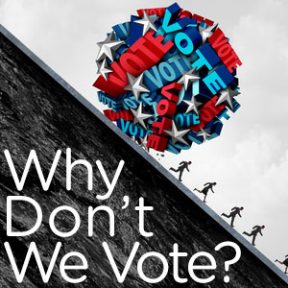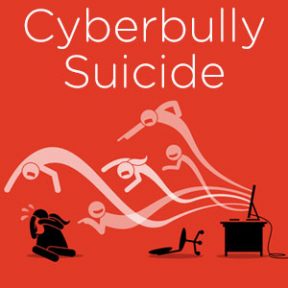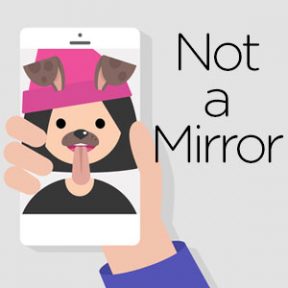 Could it be that they are intimidated by the decisions that are up for grabs during elections like this one? I know I felt overwhelmed as I sat down with the piles of postcards, booklets, and voter registration packets. Just getting to the polls and voting is half the battle. The other half is wading through the propaganda and understanding how to vote in their best interests.
Could it be that they are intimidated by the decisions that are up for grabs during elections like this one? I know I felt overwhelmed as I sat down with the piles of postcards, booklets, and voter registration packets. Just getting to the polls and voting is half the battle. The other half is wading through the propaganda and understanding how to vote in their best interests.
I would like to see a non-partisan group weigh in on the candidates and measures in a quick, simple chart that is easy to read and understand. I’d like to see who is funding them, who endorses them, and what ramifications will result from them. In other words, I don’t think people have the time, knowledge, or bandwidth to make informed decisions for every category on their ballots, so let’s make it easy for everyone.
Understanding the truth behind every candidate and measure is intimidating to everyone, and this is why people don’t vote!
Until someone invents the perfect system, please check out ballotpedia.org. You can enter your address and zip code and see what will be on your personal ballot. You can click all text in blue to read further information on all measures, candidates other items on your ballot.
 Could it be that they are intimidated by the decisions that are up for grabs during elections like this one? I know I felt overwhelmed as I sat down with the piles of postcards, booklets, and voter registration packets. Just getting to the polls and voting is half the battle. The other half is wading through the propaganda and understanding how to vote in their best interests.
Could it be that they are intimidated by the decisions that are up for grabs during elections like this one? I know I felt overwhelmed as I sat down with the piles of postcards, booklets, and voter registration packets. Just getting to the polls and voting is half the battle. The other half is wading through the propaganda and understanding how to vote in their best interests.
I would like to see a non-partisan group weigh in on the candidates and measures in a quick, simple chart that is easy to read and understand. I’d like to see who is funding them, who endorses them, and what ramifications will result from them. In other words, I don’t think people have the time, knowledge, or bandwidth to make informed decisions for every category on their ballots, so let’s make it easy for everyone.
Understanding the truth behind every candidate and measure is intimidating to everyone, and this is why people don’t vote!
Until someone invents the perfect system, please check out ballotpedia.org. You can enter your address and zip code and see what will be on your personal ballot. You can click all text in blue to read further information on all measures, candidates other items on your ballot.
 There are 4 ways to get better letters of recommendations
There are 4 ways to get better letters of recommendations
College-bound seniors request letters of recommendation from 2 teachers and their guidance counselor every fall creating angst and stress for those “lucky” recipients. Some teachers have to write upwards of 200 letters of recommendation and counselors even more. That means they are writing these letters after school, on weekends, and during the holidays – and they don’t get paid to write them!
Students who attend elite college-preparatory schools have a clear advantage because the teachers have pressure from parents and stakeholders to give each student the edge needed to get into selective colleges. Many of these teachers and counselors request that students and parents complete surveys and write short answers to several questions so that they can write comprehensive letters of recommendation.
But students who attend large public high schools don’t have the same privileges. Their teachers often use form letters to pump out hundreds of letters in an afternoon. When they’re underpaid and not compensated for the hours required to complete these forms and write these letters, the student generally receives less glowing and personalized recommendations.
There are 4 ways to get better letters of recommendations:
- Create a complete resume listing all of your activities and accomplishments since 9th grade.
- Write a cover letter that describes your goals for college (major) and why you have selected these colleges.
- Give the teacher and counselor at least 4 weeks to complete these letters.
- Thank the teachers and show your appreciation by being kind and respectful.
If you put in just as much time to help your teachers and counselor as they do to write your letters of recommendation, you’ll get the best results.
 Attending a high school with wealthy students has more influence on both education and life successes than attending a high school with high achievers. A recent study by University of Tubingen and University of Illinois Urbana Champagne indicates that high socioeconomic status correlates to a lifetime of academic and career success. Students do better if the other students are average academic achievers rather than high achievers. Hmm.
Attending a high school with wealthy students has more influence on both education and life successes than attending a high school with high achievers. A recent study by University of Tubingen and University of Illinois Urbana Champagne indicates that high socioeconomic status correlates to a lifetime of academic and career success. Students do better if the other students are average academic achievers rather than high achievers. Hmm.
So go to school with rich kids who are B students? Obviously networking is a given with wealthy connections, but average students? Maybe it’s because competing against overachievers may be debilitating whereas competing against average students creates a healthy and doable challenge. Either way, the rich get richer, and sadly, the poor remain poor.
[Source]
 Grade inflation hurts students. Yup! Don’t get me wrong, parents and students love to see A’s and B’s on report cards and transcripts because it gives them a sense of security that they can get into a “good” college and that everything is okay. The problem is that this false sense of security leads to relaxed study skills, and worse, the misleading belief that the student has a mastery of the material and will be successful at the next level.
Grade inflation hurts students. Yup! Don’t get me wrong, parents and students love to see A’s and B’s on report cards and transcripts because it gives them a sense of security that they can get into a “good” college and that everything is okay. The problem is that this false sense of security leads to relaxed study skills, and worse, the misleading belief that the student has a mastery of the material and will be successful at the next level.
One of my clients took the entire math series – all the way to Calculus – and received A’s and B’s in every course at her public charter school in California. When she entered community college upon graduation, she was surprised that she would be required to take a high-school-level math course after taking the math placement exam. What surprised me was that she failed that Algebra 1 course TWO TIMES because she didn’t have 5th grade math skills. She couldn’t add and subtract fractions, solve equations, or even understand Algebra concepts. This is what happens with grade inflation.
When students get high grades for lackluster performance, they don’t learn to read critically, they can’t solve problems, and they believe that they’re doing just fine. We need to give students the grades that they deserve so they can learn early on how to study to get their coveted A’s.
A friend who teaches at a prestigious university told me that he feels like he is teaching remedial classes. The students enter his class with such poor academic skills that he seriously can’t teach the class and cover the material he needs to because the majority of the students wouldn’t pass the class. The administration puts pressure on professors to give good grades, so once again, we have grade inflation even at the highest levels.
I attribute this problem to “helicopter” parenting that starts in elementary school. When parents swoop in to protect their children from hurt feelings when they don’t win 1st place awards or get straight A’s, the student doesn’t have the real-life opportunities to improve their skills so they can earn the trophies or grades that they deserve. Besides, the students know when their parents or teachers don’t believe in them and helicopter parenting contributes to students’ low self-esteem and all of the negative behaviors as a result.
So what’s the solution? Rather than protect students from the truth by inflating grades or giving trophies to every student, teach the students how to be successful. Guide them to improve their skills and give loving and healthy feedback along the way. After all, we don’t want a society filled with entitled adults without skills or knowhow!
[Source]
 Growing up, I ate meat at every meal. We ate ribeye steak at least once a week. I never considered becoming a vegetarian because that was something that only hippies would do.
Growing up, I ate meat at every meal. We ate ribeye steak at least once a week. I never considered becoming a vegetarian because that was something that only hippies would do.
But fast forward to a world that is in ecological decline — and surprisingly, making the change from a hardcore carnivore to a vegetarian/pescatarian/vegan was easy to do.
Here are some things to think about:
– Americans eat about 225 lbs of red meat and chicken per year
– Raising livestock causes deforestation, which accelerates climate change
– Raising pigs in high-rise buildings, then spraying fecal waste in the air causes human health problems
– Growing feed for livestock consumes 36% of farmland
– 96% of mammals in the world are livestock and pigs; only 4% are wild
– 70% of birds are farmed poultry; only 30% are wild birds
– It takes 600 gallons of water to produce just one pound of hamburger
– Our water supplies are contaminated with livestock waste
If we reduce our meat intake by 90% — Yup! – we could eliminate world hunger AND stave off climate change destruction. Eating vegetarian or pescatarian can also improve your health – it has turned my health around 180 degrees!
 Did you know that 400 American families have more wealth than 80 million American families? Yup. Think about that for a minute.
Did you know that 400 American families have more wealth than 80 million American families? Yup. Think about that for a minute.
FACTS:
* Top 1% = 40% of the wealth in America!
* Top 5% = 74% of the wealth in America!
* 18% increase in CEO pay in 2017!
* Average CEO pay is $19,000,000 (MILLION) per year!
Don’t be fooled. Free market and “smaller government” is NOT going to fix this!
VOTE for change in the November election – and get your friends and neighbors to join you!
 As if we needed something else to worry about… If you haven’t heard of the Momo Challenge – and you have children – you need to check this out. This is an internet game that allegedly lures kids to complete escalating tasks that are dangerous and involve self-harm. The final challenge in this game is suicide. By blackmailing the kids to do these tasks, Momo gets kids to do things that they normally wouldn’t do. Kids can download the WhatsApp game on their smart phones. “Momo” is a terrifying image of a girl with bulging eyes. So far, there are at least 3 teen suicides cases that may be linked to this Momo Challenge.
As if we needed something else to worry about… If you haven’t heard of the Momo Challenge – and you have children – you need to check this out. This is an internet game that allegedly lures kids to complete escalating tasks that are dangerous and involve self-harm. The final challenge in this game is suicide. By blackmailing the kids to do these tasks, Momo gets kids to do things that they normally wouldn’t do. Kids can download the WhatsApp game on their smart phones. “Momo” is a terrifying image of a girl with bulging eyes. So far, there are at least 3 teen suicides cases that may be linked to this Momo Challenge.
Although the authorities have not determined whether or not the Momo Challenge is real or not, parents need to understand how these challenges work so they can monitor their children’s activities. A few years ago, a Russian “Blue Whale Challenge” asked players to do 50 daily challenges – many involved self-mutilation – and ended with suicide. At least 130 people died as a result of this game.
Tweens between 12 to 14 years old are the most vulnerable to these terrifying games. Check the games your children play on their phones and computers. This game appears to have started as a Facebook group, and WhatsApp has over a billion users. We need to protect our kids from sick people who threaten, blackmail, and cyberbully our youth.
[Source 1]
[Source 2]
 One of my students wrote this on a college application essay. Imagine writing “I’d’ve come over if you asked.” (I’d’ve = I would have).
One of my students wrote this on a college application essay. Imagine writing “I’d’ve come over if you asked.” (I’d’ve = I would have).
Seems like the English language has become so informal that rules for punctuation and contractions are arbitrary.
Believe it or not, it’s actually in the dictionary and everywhere online.
Check this out:
Definition of ‘I’d’ve’
English: I’d’ve
I’d’ve in British
(ˈaɪdəv)
contraction of
informal
I would have
I can’t understand why I’d’ve bothered to do that.
Collins English Dictionary. Copyright © HarperCollins Publishers
I refuse to use “I’d’ve” and encourage all of my college-bound students to refrain from using it in their college application essays. Yikes!
 Another way social media is destroying our kids’ self esteem.
Another way social media is destroying our kids’ self esteem.
My students suffer from depression and feelings of isolation more than ever. I have the unique opportunity to talk and engage with students one-on-one as we discuss all things that lead to college admissions. Over the years, I have seen what used to be optimistic and hopeful teens become insecure and depressed. They spend more time alone – thanks to social media – and they feel left out. Now, “Snapchat Dysmorphia” is causing teens to seek plastic surgery to physically change their facial features so they look like they have larger “adorable” eyes with “perfect” flawless skin.
If you haven’t seen images that have been altered with cute filters, check them out here. On the surface, these filters can be entertaining as you see yourself and your friends with whiskers, bunny ears, and those adorable Anime-style eyes. Unfortunately, this can have very negative effects on teens who are naturally insecure about their acne, length of eyelashes, and other features.
When our children feel left out or face cyberbullying every day, do we want them to also hate the way that they look? Everyone can find their own personal imperfections. Seems to me that kids need to hear from parents and others that Snapchat and Facetune can be entertaining – kinda like how we laugh at our distorted images in fun house mirrors – but that looking like that for real is neither realistic nor practical.
[Source]
 Glad to see higher education institutions offering free tuition to all of their students, regardless of their ability to pay. New York University just announced that all current and future medical students will receive a full ride. Woo hoo!
Glad to see higher education institutions offering free tuition to all of their students, regardless of their ability to pay. New York University just announced that all current and future medical students will receive a full ride. Woo hoo!
Most medical students graduate with about $180,000 in medical school debt, which means they’re paying around $1500-$2000 per month in student loans. When student loans are this high, many doctors choose more lucrative specialties, creating a shortage in lower-paying fields like primary care and pediatrics.
I hope to see more colleges offer free tuition to all of their students. Education benefits everyone. By making it more affordable, America will continue to be one of the few places on earth where anyone can become a professional and enjoy a successful career.










